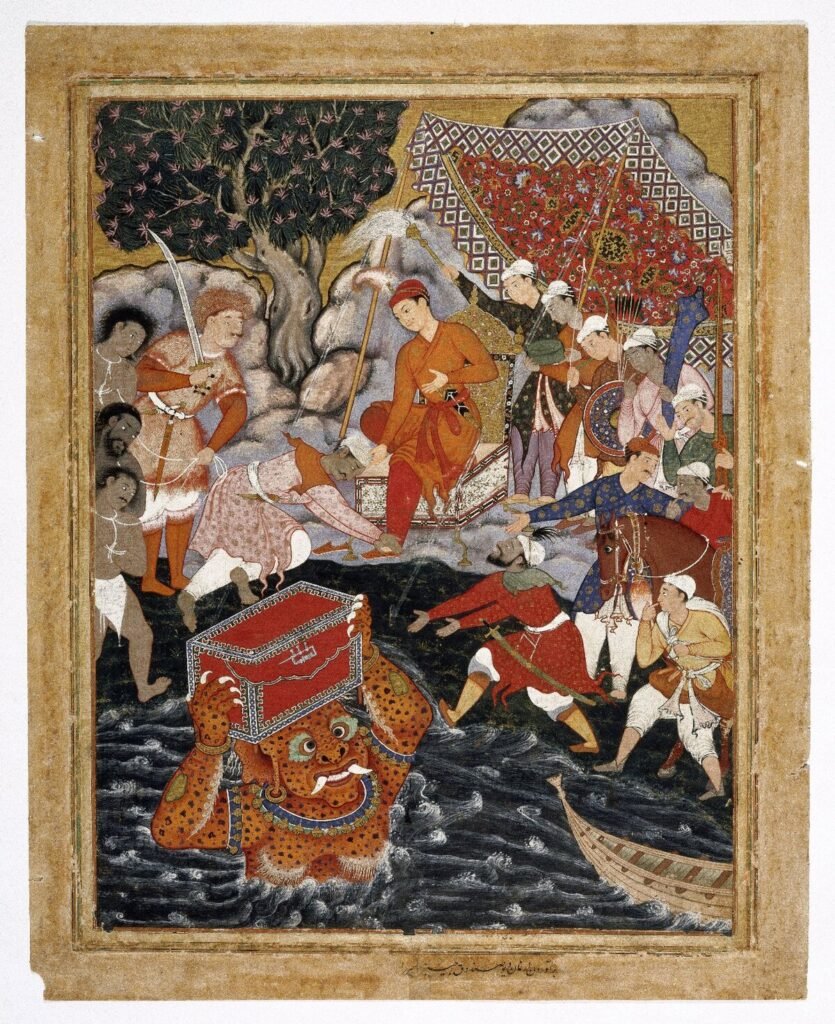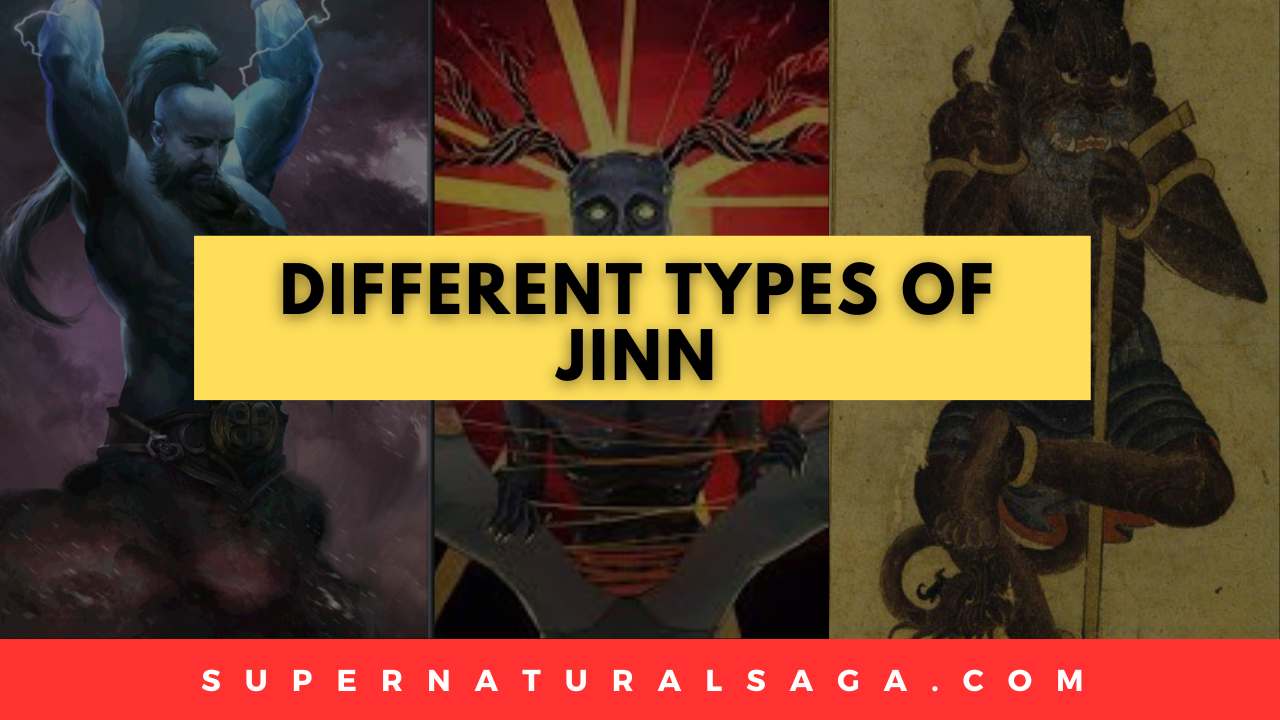Jinn are integral to Islamic theology, scriptures and traditions, yet they remain mysterious spiritual beings to most people. This comprehensive guide aims to shed light on the different types of Jinn that exist, their interactions with humans, and contemporary perspectives that both dispel myths and provide spiritual wisdom.
The Creation of Jinn
Several verses in the Holy Quran explicitly confirm the existence of Jinn as beings created from scorching “smokeless fire” (15:27, 55:15). This sets them apart from humans created from clay and angels created from light. Jinn have free will like humans, so they can make choices between good and evil.
They live in communities, have supernatural powers and abilities, and play active roles in the spiritual and physical realms.
What are the 3 types of Jinn in Islam?
1. Simple Jinn
As smokeless fire permeates air unseen, basic Jinn move about detecting humans easily while remaining hidden themselves.
Only very pious people have reportedly perceived them. These Jinn can choose between good and evil, belief and denial in God. The Quran hints at Prophet Solomon using his God-gifted powers to command Jinn in various tasks like building structures and retrieving items.
2. Ifrits Jinn

Ifrits are evil Jinn warriors mentioned in pre-Islamic and Islamic lore. They resemble giants, have enormous strength and ability, and cannot be easily controlled, even with magic which binds other Jinn types.
However, they too submit to prophets and saints through God’s grace.
The throne story of Solomon and Bilqis in the Quran involves an Ifrit jinn fetching Queen Bilqis’s throne within moments despite its fantastical craftsmanship.
Some notable characteristics of Ifrit Jinn are:
Enormous Size and Strength: Ifrits are described as giant winged creatures, far more physically formidable than regular Jinn or humans. They possess tremendous power.
Association with Fire: In line with their links to smokeless fire in Quranic scriptures, Ifrits are thought to originate and reside within the depths of scorching desert sands.
Difficult to Control: Ifrits are very difficult to subjugate or control, even using sorcery which binds most other Jinn. Only prophets and saintly individuals miraculously manage to make Ifrits submit to their will.
Tribal Social Structure: Ifrits are unique among Jinn for their hierarchical social organization and lineage. Like humans they have kings, tribes grouped under clans and adhere to formal authority.
Ability to Procreate with Humans: Ifrits can reproduce with human spouses, according to some Islamic narratives. Therefore they blur the lines between physical and spiritual creations through such hybrid offspring sharing two worlds.
In conclusion, the mighty rebellious Ifrits remain fascinating figures within the world of Jinn and Islamic magic lore. Textual references portray them as physically strongest class of Jinn if also harder to govern due to their warrior temperament. However, Ifrits ultimately bow before the Prophets when exposed to divine spiritual power.
3. Marid Jinn

Marid are the mightiest Jinn said to be the offspring of Ifrits. According to folk tales, they grant wishes when they are forced to comply after gruesome battles or clever trappings.
However, subjecting them to serve humans may backfire with their proverbial cunning and rebellion.
The gigantic angel-like Marid Bahamut carries earths on its shoulders awaits to follow God’s command and blow a horn to signal the Day of Judgment per Islamic eschatology.
Marids are thus immensely powerful beings, with the non-humanoid Bahamut being the strongest.
Some standout traits associated with Marids include:
Highest Rank: Marids possess the highest status among all Jinn categories in most classifications enumerated by Muslim theologians over the centuries.
Great Strength: Marids have tremendous supernatural strength, even surpassing the mighty Ifrit Jinn in brute magical force. They can easily lift mountains or gigantic monsters like the Bahamut fish carrying cosmic burden.
Granting Wishes: An intriguing ability of Marids is that they can make wishes of humans come true when they are trapped or outsmarted after difficult battles. However, cunning Marids grant such wishes in ways that often end up backfiring on the human master.
Rebellion and Arrogance: In line with wish-granting lore, Marids are infamous for being wickedly defiant against humans who try to seize control over them through clever tricks or sorcery. They possess extreme arrogance.
Royal Lineage: Marid Jinn are speculated to be descendants of Ifrit nobility based on their shared physiques and temperaments. This grants them an air of supreme confidence bordering on entitlement.
The Diverse Jinn Types and Traits in Islamic Folklore
Besides the basic three levels of Jinn, various fascinating nuanced types emerge from Islamic narratives and regional lore. However, canonical scriptures only differentiate between righteous believing Jinn and defiant satans among them.
Shaitans

The Islamic devil figure, Iblis originates from Jinn and disobeys God by refusing to bow to Adam. Thus, God curses him as Shaitan, meaning devil (18:50).
His offspring rule lower ranks of evil Shaitans who continually try to misguide humans into sin by waswaisa (evil whisperings). They may appear during sinister rituals or fearsomeness to promote sin and polytheism. Thus, Shaitans directly counter the angels guarding humans from imagining harm.
Qareen Jinn

Qareens deserve special mention apart from the above broader types since these individual Jinn companions get assigned to every human from birth onwards.
Qareens can assess all their human’s private affairs. However, Prophet Muhammad’s (PBUH) Qareen astonishingly embraced Islam according to Hadiths about interaction between Jinns and Islam’s final messenger.
Distinguishing beliefs regarding Qareens are:
Individual Companionship: Unlike all other Jinn types with communities, Qareens get assigned one-on-one to every human entering the world per traditions. They observe all activities of their human.
Recording Good and Bad Deeds: A vital role of Qareens is to function as record-keepers of their human’s life events for final judgment. They cannot intercede with divine destiny.
Conversion Stories: Exceptional narrations state some Qareens embraced the Islamic faith like humans, being profoundly moved after witnessing their righteous human counterparts worshipping God under hardest circumstances.
Remaining Mostly Invisible: While assigned to individuals, Qareens generally stay invisible though some mystics could reportedly view them through spiritual vision. The Qareen exists like a witness we cannot see.
Partners in Life’s Journey: Therefore, Qareens share the intimacy of walking alongside their human despite remaining behind the realm of perception. The human remains oblivious yet learns of this camaraderie after death.
Other Lore-Based Jinn
Regional Islamic folklore brims with diverse Jinn types overlapping with mythologies across West, Central and South Asia.
The ghoul Jinn

The ghoul devours dead human flesh and shape-shifts between alluring woman and beast forms to trap humans.
Stories of the ghoul feature prominently in Middle Eastern narratives and Islamic folklore about notorious Jinn.
Some defining features of this fearful creature include:
Corpse-Eating Shape-Shifters: Ghouls revel in digging up human graves to feast on the flesh of the dead. They can shape-shift between alluring person forms to lure the unwary and jackal-like beasts once in their lair.
Trickster Tactics: Ghouls employ elaborate ruses such as mimicking voices of loved ones to deceive victims into isolated areas where they lay traps to catch their prey. Their cunning matches their vileness.
Appearing as Temptresses: When appearing as seductive maidens, female ghouls draw wandering men towards phantom camps before revealing their terrifying actual donkey-like hairy legs and demonic faces.
Guardians of Dark Knowledge: According to some folk legends, ghouls possessed intricate spiritual insights about astrology, alchemy, and medicine written in one-of-a-kind manuscripts – awarded to the few bold enough to seek them out.
Dwellings in Ruins and Graveyards: Suiting their savage scavenging disposition, ghouls chose to live in long-forgotten ruins and cemeteries abundant with human remains allowing them to satisfy their macabre diets.
In essence, ghouls dominate Islamic demonology today as rapacious shape-shifting Jinn representing the utter depths of cursed evil from ancient times. Their crafty ways of stalking victims stir memories of humanity’s innate fear towards ravenous beasts lurking in the darkness.
Si’lat Jinn
Si’lat also shape-shifts into seductive beauty that charms and ultimately kills males straying into the desert, similar to ancient Greek sirens.
Si’lats stand out as one of the most intriguing and dangerous types of Jinn referenced in Middle Eastern lore.
Some notable characteristics of Si’lat Jinn include:
Expert Shape-Shifters: Si’lats possess exceptional shape-shifting capabilities even among Jinn folk known for malleable forms. They skillfully morph into alluring humans of the opposite gender to seduce victims.
High Intelligence: Si’lats are considered the cleverest Jinn species, using their razor-sharp intellect to outsmart humans and other Jinn alike to achieve sinister motives.
Meticulous Planning: Unlike brute intimidation by Ifrits or wish-magic by Marids, Si’lats deliberately calculate every action to induce maximum benefit for themselves through exploitation.
Malicious Seductresses: Almost always appearing as irresistibly beautiful women, female Si’lats trap righteous men via temptation. Many myths warn of the desert Si’lat luring admirers to their doom.
Vampiric Tendencies: Some scholars related Si’lats to demons in other beliefs draining victims physically and spiritually after winning confidence through feminine charm offensives.
Nasnas Jinn
Nasnas appears as hopping semi-humans representing Jinn hybridizing with people, much like the half-spirit daemons in Roman beliefs.
The mystifying Nasnas occupies a curious spot within Islamic folk beliefs regarding Jinn who broke divine laws by intermixing liberally across creation boundaries that should remain sanctified.
Some key Nasnas Jinn attributes include:
Forbidden Hybrids: Nasnas manifested as beings split halfway between humans and wildlife, alluded in scriptures as off-limits experiments in forbidden hybridization by rebellious Jinn. Their name itself means “half-divided”.
Fragmented Forms: In line with hybrid origins warping natural forms, Nasnas appeared highly incomplete with partial limbs and deficient senses. Some possessed just singular arms, legs or eyes – almost portrayed as spiritual errors.
Compensating Movement: Due to lacking whole bodies, Nasnas developed preternatural sideways mobility. Folk tales describe them violently hopping on their one leg or rolling via their sole hand with startling speed.
Touch of Death: While lacking strength from their broken bodies, Nasnas carried highly poisonous skin that instantly killed anything they contacted by chance during their frantic motion. Few lived after brushing a Nasnas.
Conclusion: Embracing the Magnificence of God’s Creation
In conclusion, familiarizing ourselves with the Islamic concept of Jinn leads to acknowledging an entire self-aware species besides humankind created for divine recognition.
God reveals glimpses into these astounding parallel realities so we comprehend the sheer scale of His supremacy through signs like the Jinn’s existence.
Within Islamic doctrine, interacting beneficially with this unseen world accordingly becomes plausible through spiritual alignment.
Beyond folk beliefs and fairy tales, Islamic principles ultimately guide us to coexist with and understand God’s magnificent multi-dimensional creation in light of established wisdom sources.

